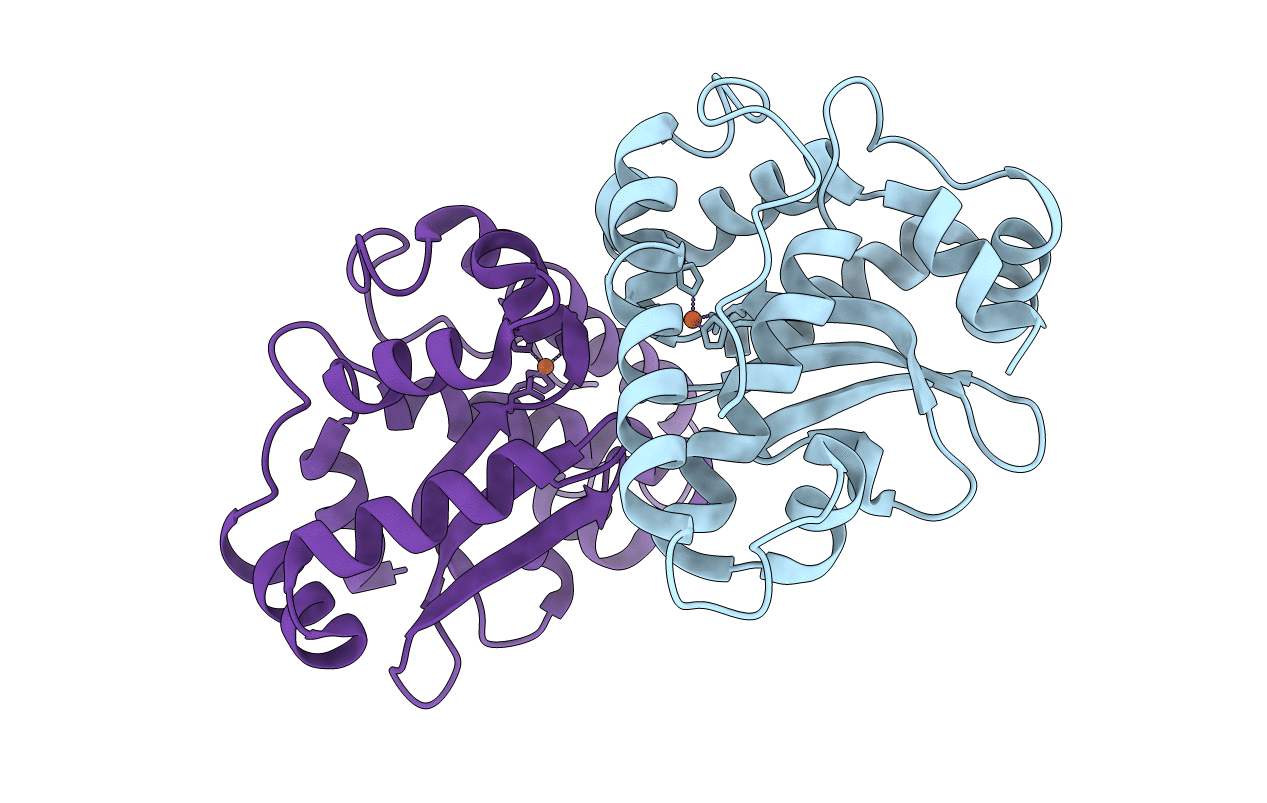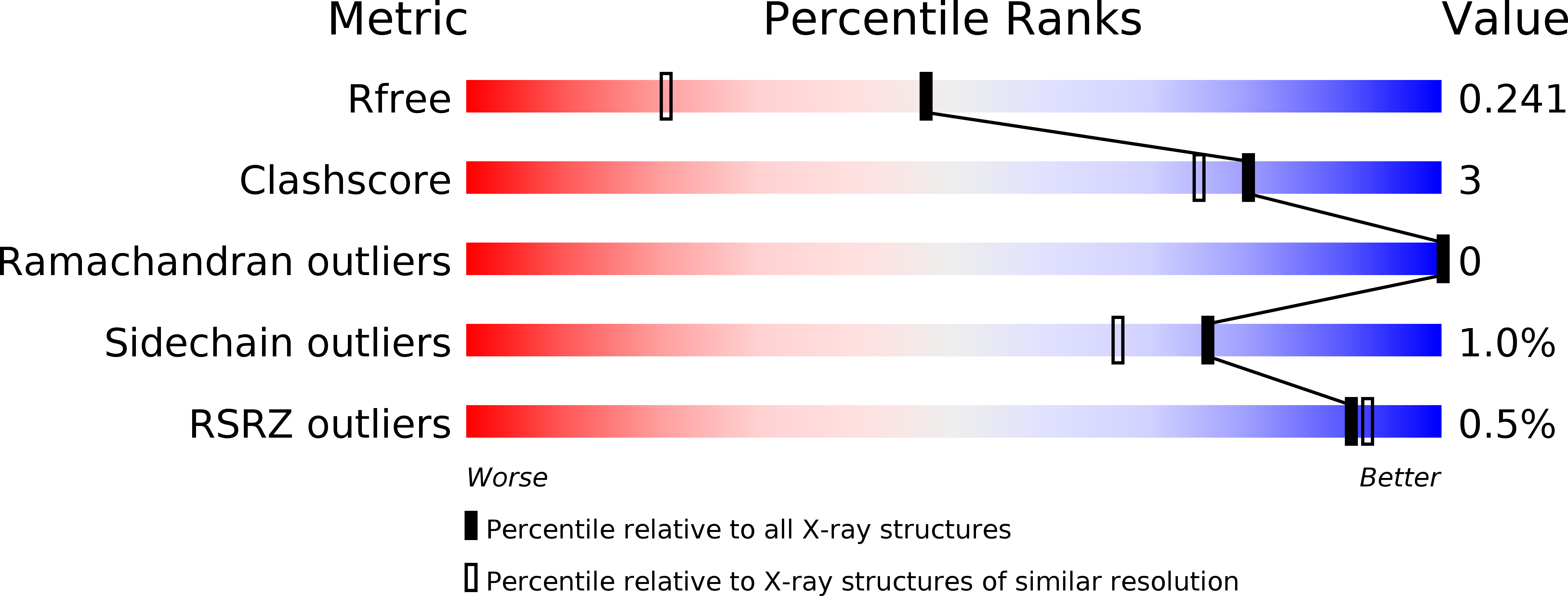
Deposition Date
2009-01-06
Release Date
2009-02-17
Last Version Date
2023-12-13
Entry Detail
PDB ID:
2W7W
Keywords:
Title:
The crystal structure of iron superoxide dismutase from Aliivibrio salmonicida.
Biological Source:
Source Organism:
ALIIVIBRIO SALMONICIDA (Taxon ID: 316275)
Host Organism:
Method Details:
Experimental Method:
Resolution:
1.70 Å
R-Value Free:
0.23
R-Value Work:
0.20
R-Value Observed:
0.20
Space Group:
P 32 2 1


